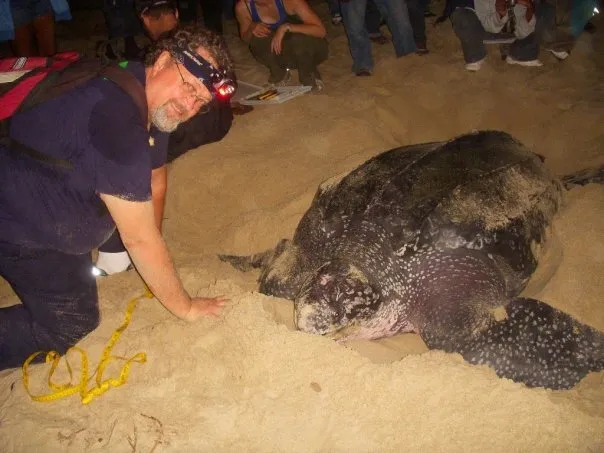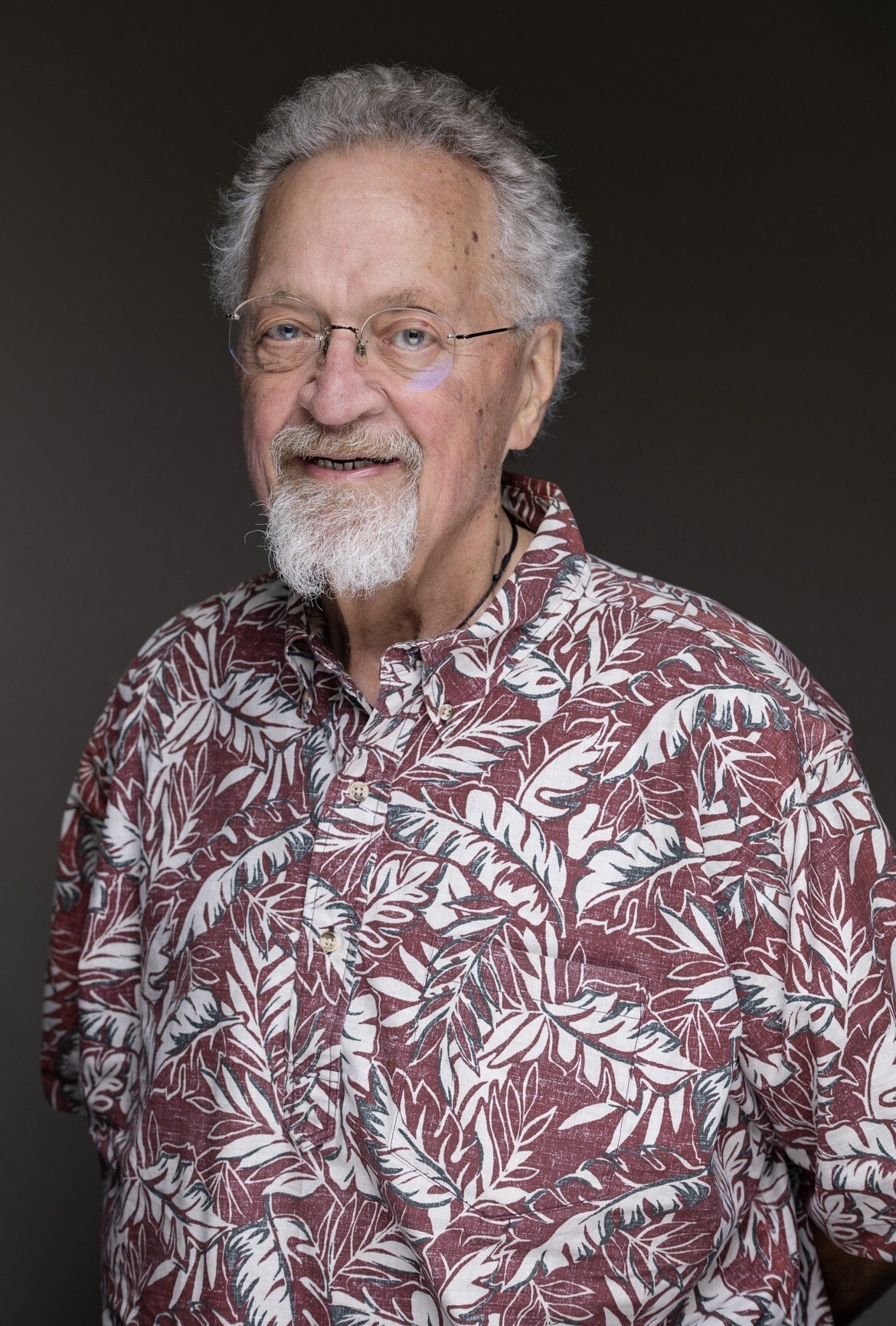As early as high school, Larry Crowder’s passion for marine ecology was sparked by visits to Stanford’s Hopkins Marine Station in Monterey Bay — the oldest marine laboratory on the West Coast.
“I never imagined I would have the opportunity to work here,” said Crowder, professor of marine ecology and conservation. “It’s a real joy. The field station is part of the magic.”
The intimacy of faculty-student interactions at Hopkins and the immersive scenery of Monterey Bay ultimately drew Crowder, a California native, back to the Bay Area from Duke University, where he taught marine biology.
At Duke, Crowder established one of the first marine conservation education programs in the world, teaching alongside anthropologists, economists and governance experts.
“I love basic research, but fundamental research with an application that’s important in the real world is research on steroids,” he said.
Crowder is a Senior Fellow at the Woods Institute for the Environment and an Affiliated Faculty at Stanford Center for Ocean Solutions. In these roles, he continues his focus on finding solutions-oriented approaches to marine conservation challenges and designing pathways to solutions with a deliberately interdisciplinary approach including natural sciences, social sciences and governance.
“Larry Crowder has long been a pioneer at taking new science about ocean life and turning it into a practical benefit for ocean species and for people,” wrote Stephen Palumbi, professor of marine sciences. “His early work on sea turtle conservation, his early dedication to the new field of marine conservation biology and his continued work with many students is a road map to using science and teaching for bold benefits.”
Crowder began his college career as an engineering major before an introductory biology class changed the course of his interests.
“The challenge was laid before us that there were severe problems on Earth with the water and air,” said Crowder, in reference to the first Earth Day in 1970. “Climate change wasn’t even on the radar yet, but I thought this is something that I really want to get involved in.”
Crowder credits his ability to contribute meaningful solutions to the challenges he encounters in the field to his two passions of biology and math. His strong quantitative skills from his engineering background coupled with his expertise in living systems allowed him to not only understand, characterize and model ecological problems, but also derive solutions.
“It was about the excitement of understanding the world, but also about understanding it well enough to contribute to conservation, to solving problems,” he said.
In the late 1980s, Crowder published a paper on modeling the population of loggerhead sea turtles, then an endangered species. This paper, which was later widely cited in the literature, led to the loggerhead population increasing at a rate of 3% per year compared with a decrease of 5% per year previously. Additionally, the number of Kemp’s Ridley sea turtle nests increased from 800 to 50,000 per year in the southeast U.S.
“I realized that doing this kind of science, I can not only make interesting, new discoveries, but I can also promote change in the real world,” said Crowder, who received a lifetime achievement award from the International Sea Turtle Society in recognition of his work on Pacific Loggerheads last May.
Through numerous projects affecting real-world policy-making, Crowder has worked to advance scientific understanding as well as established evidence-based frameworks for marine legal structures on national and international levels. Looking forward, he said he hopes to resolve some of the most pressing oceanic challenges, including bycatch, sustainable seafood, marine spatial planning, small-scale fisheries and social-ecological systems.
“Larry’s dedication has had a profound and lasting impact on marine science,” wrote Dana Briscoe, senior data scientist at the Doerr School of Sustainability. “Not only has he helped to shape policies that have been transformative to marine conservation, but he has been a true inspiration to many others in the field.”

Crowder develops his interdisciplinary understanding of global challenges by learning from marine science scholars across different cultures. He is a co-editor of “Marine Conservation Biology: The Science of Maintaining the Sea’s Biodiversity,” and editor of “Navigating Our Way to Solutions in Marine Conservation,” a forthcoming anthology that documents the diverse, cross-cultural expertise of global marine science scholars with a particular focus on the practices of Indigenous societies.
“There are a variety of different solutions, but we need to work together across the Western science tradition, the Indigenous knowledge tradition, all the various natural and social sciences, formal and informal governance, to come up with ways to solve the problems that we’re facing,” he said. “We should look to examples of people in cultures who actually have a track record of living sustainability with their resources, and see what we can learn from them.”
To inspire Stanford students across disciplines to contribute to marine conservation, Crowder teaches the introductory seminar “Ocean Conservation: Pathways to Solutions.”
“What I wanted to do, especially with freshmen, is engage [their] intellect, passion, desire to solve problems in the real world and give hope that [they] could do that from any positionality,” he said.
On a personal level, teaching and mentoring are as “valuable and satisfying” to Crowder as research, he said.
“People count publications and talk about getting into the National Academy of Sciences,” he said. “When I see the lights go on in someone’s eyes, and they are inspired, that’s really exciting, and maybe more exciting, and certainly more immediate than saying, ‘in 30 years, we’ll be able to decide if I had an impact from a research perspective.’”
Crowder advises his students to consider their careers not as a “destination,” but rather as a “journey.”
“In my career, the joy has come from the journey. The joy has come from not being so tied to your destination,” he said. “Use your head, think hard about your interests. But ultimately, people are driven by passion. What your heart drives you to do is ultimately going to override what your head drives you to do. Listening to both is a good idea.”
After a packed schedule of teaching and conducting research, Crowder often ends his day watching the sun set over the Pacific Ocean through the floor-to-ceiling windows at the Reading Room in the Hopkins Library — a cornerstone of the marine laboratory that he said is the “best building” across the university.
“It’s really become a place not for books, but for people,” said Crowder, who also enjoys watching humpback whales breaching offshore in the company of his colleagues and students at the library and on the point overlooking Monterey Bay. “There’s a lot of natural space… [and that] encourages conversation and interaction.”
Crowder is reminded daily of his late father’s philosophy every day, which was “‘Wouldn’t it be wonderful to find a career that you love doing so much you would do it for free?’” he said.
“Well, I hit the jackpot because I love doing the work that I do,” Crowder said. “I don’t have any plans to retire because I’m having too much fun.”
This article was updated to more accurately reflect Crowder’s 1980s research on the population of loggerhead sea turtles.
